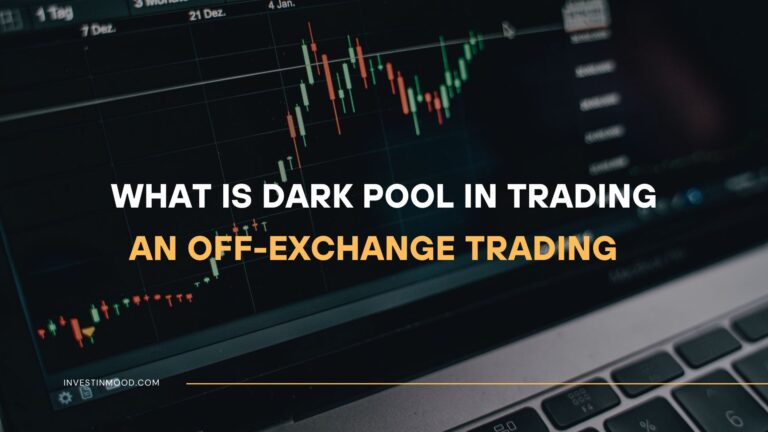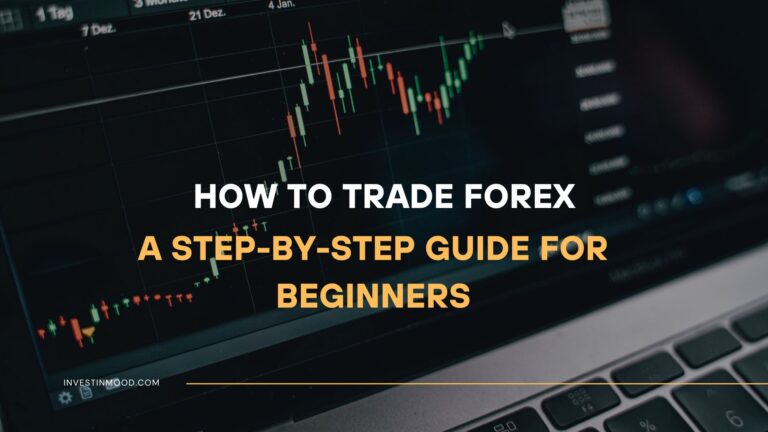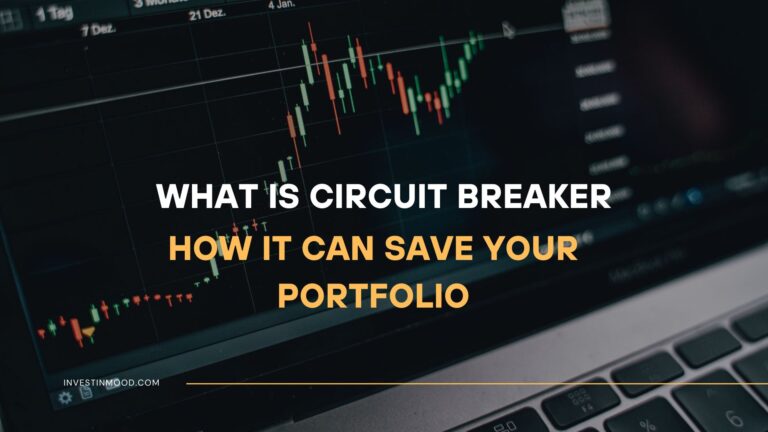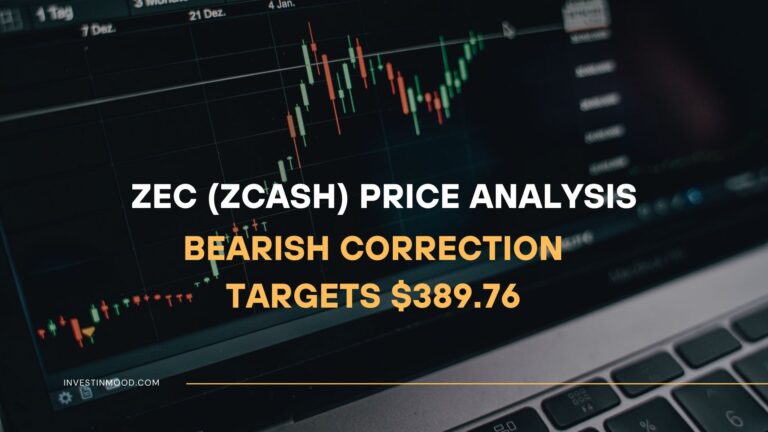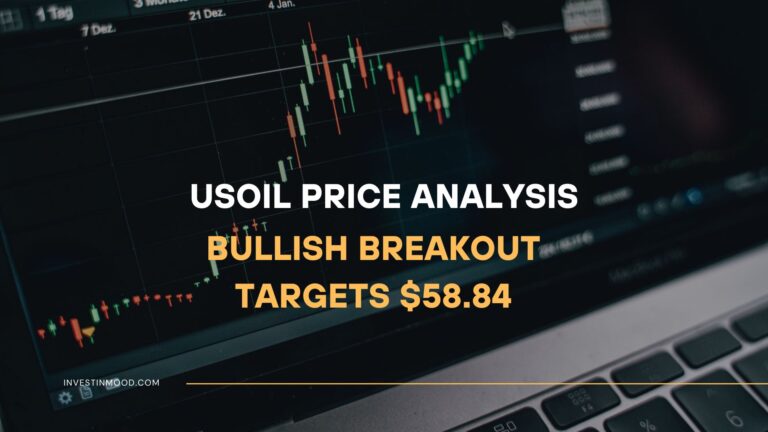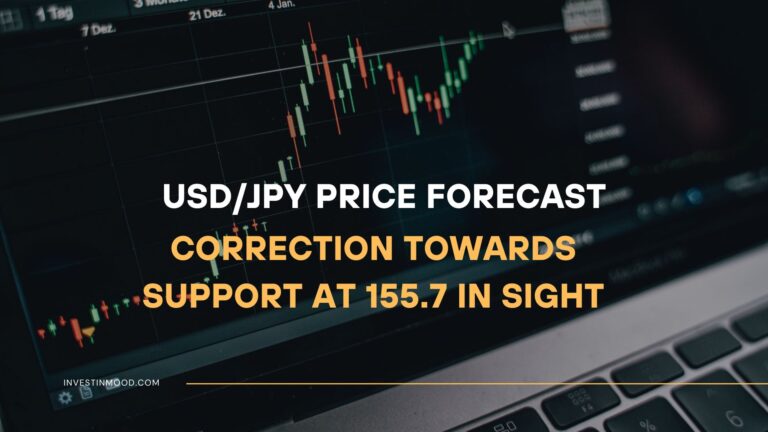
Backtesting What It Is and How It Can Improve Your Trading
Backtesting is the process of testing a trading or investment strategy using historical data to see how it would have performed. It’s the financial equivalent of a flight simulator, allowing traders to refine their approaches and manage risk before risking real capital. For active traders in the US, UK, Canada, and Australia, mastering backtesting is a critical step towards developing a robust and data-driven methodology.
Summary Table
| Aspect | Detail |
|---|---|
| Definition | Simulating a trading strategy on historical data to evaluate its potential profitability and risk. |
| Also Known As | Strategy Testing, Historical Simulation |
| Main Used In | Algorithmic Trading, Quantitative Finance, Stock Trading, Forex, Crypto |
| Key Takeaway | Backtesting helps identify a strategy’s viability but is not a guarantee of future performance due to overfitting and changing market regimes. |
| Related Concepts |
What is Backtesting
At its core, backtesting is a “what if” analysis for traders. It answers the question: “If I had used this specific set of trading rules in the past, how much money would I have made or lost?” By running a strategy against years of market data, you can gather statistics on its performance, including its win rate, average profit/loss, and maximum drawdown.
Imagine you’ve invented a new recipe. Instead of immediately serving it at a dinner party, you’d first cook it for your family to get feedback. Backtesting is like that trial run. You’re testing your “recipe” for trading in a safe, historical environment before you “serve” it to the live markets with your real money.
Key Takeaways
The Core Concept Explained
Backtesting measures the hypothetical performance of a strategy by applying its rules point-by-point to historical price data. For example, a simple strategy could be: “Buy when the 50-day moving average crosses above the 200-day moving average (a Golden Cross), and sell when it crosses below.”
The backtesting engine would scan through years of data for a stock like Apple (AAPL), identify every time this crossover happened, simulate the trade, and track the result. It doesn’t just tell you if you made money; it reveals the strategy’s behavior: How long were you typically in a trade? How often were you right? What was the largest losing streak?

How to Perform a Backtest
While there isn’t a single formula, backtesting follows a rigorous process. For traders in London or New York, this process is often automated using specialized software or custom code.

Step-by-Step Backtesting Guide
- Define Your Strategy: This is the most crucial step. Your rules must be explicit and unambiguous.
- Entry Rule: “Purchase when the RSI intersects below 30 (oversold) and then intersect back above it.”Exit Rule: “Sell when the RSI crosses above 70” or “Sell after 10 trading days.”
- Position Sizing Rule: “Only take risk 1% of the wallet on each position.”
- Acquire Historical Data: The quality of your backtest depends entirely on the quality of your data. You need clean, adjusted data for the assets you want to test (e.g., S&P 500 constituents, FTSE 100 stocks, or Bitcoin). This data must include Open, High, Low, Close, and Volume (OHLCV).
- Choose a Backtesting Platform: You can use everything from advanced programming languages (Python with libraries like backtrader or zipline) to user-friendly platforms like TradingView or your brokerage’s built-in tools (e.g., Interactive Brokers’ strategy lab).
- Code and Run the Strategy: Implement your rules in the platform. Then, run the simulation over your chosen historical period.
- Analyze the Performance Report: This is where you extract meaning. Look beyond total return. Key metrics include:
- Total Return / Compound Annual Growth Rate (CAGR): The overall profitability.
- Maximum Drawdown: The largest peak-to-trough decline in your portfolio. This is critical for understanding risk.
- Sharpe Ratio: A measure of risk-adjusted return (higher is better).
- Win Rate: The percentage of trades that were profitable.
- Profit Factor: (Gross Profit / Gross Loss). A value above 1 indicates a profitable system.
Why Backtesting Matters to Traders and Investors
- For Systematic Traders: It is the foundation of their entire approach. It provides objective, historical evidence that a strategy has an edge, moving beyond gut feeling to quantitative fact.
- For Retail Traders: It helps avoid costly mistakes. A strategy that sounds good in theory might be revealed as unprofitable or far too risky when tested across multiple market cycles, including the 2008 financial crisis or the 2020 COVID crash.
- For Portfolio Managers: They can use backtesting to simulate how a new strategy would have correlated with existing holdings, thus optimizing the overall portfolio’s risk-return profile for their clients in Toronto or Sydney.
How to Use Backtesting in Your Strategy
Use Case 1: Validating a Mean-Reversion Strategy
- Strategy: Buy an S&P 500 ETF like SPY when its price drops 2% below its 20-day moving average, and sell when it returns to the average.
- Backtest Action: Run this from 2010-2020. The results might show a high win rate but also reveal that during strong bull markets, you exit trades too early, missing out on larger trends. This insight would force you to refine your exit rules.
Use Case 2: Stress-Testing a Trend-Following System
- Strategy: A classic moving average crossover system on the GBP/USD forex pair.
- Backtest Action: Specifically run the test through 2016, encompassing the Brexit referendum. The results would show a massive drawdown and likely a series of losing trades, teaching you about the strategy’s vulnerability to extreme volatility and gap risk.

To start backtesting your own ideas, you need a platform with robust tools. We’ve reviewed the best platforms for serious traders.
- Objective Strategy Evaluation: Removes emotional bias and provides hard data on performance.
- Risk Management: Helps you understand the worst-case scenarios (Max Drawdown) and prepare for them psychologically and financially.
- Confidence Building: Trading a strategy that has been rigorously tested over 10+ years of data provides the discipline to stick with it during inevitable losing periods.
- Overfitting (Curve-Fitting): The biggest danger. This is when a strategy is so complex and finely tuned to past noise that it fails miserably on new, out-of-sample data.
- Look-Ahead Bias: An error where the strategy accidentally uses data that would not have been available at the time of the trade (e.g., using the entire day’s high/low for an entry signal placed at the open).
- Simplified Assumptions: Backtests often assume perfect execution, no slippage, and available liquidity, which isn’t always the case in live markets, especially for small-cap stocks or during flash crashes.
Common Backtesting Pitfalls
Many seemingly profitable strategies are mirages created by subtle errors in the backtesting process. Recognizing and eliminating these pitfalls is what separates amateur strategy tests from professional-grade analysis. Here’s a checklist of critical errors and how to fix them.
Pitfall 1: Survivorship Bias
- The Illusion: You build a strategy that buys the top 50 US stocks by market cap and holds them for 5 years. Your backtest from 2015-2020 shows amazing returns. The problem? Your data only includes companies that survived until 2020, like Apple and Microsoft. It conveniently ignores companies like General Electric (GE), which fell dramatically, or those that went bankrupt entirely.
- The Fix: Use a data provider that offers a “point-in-time” universe. This means that for any given date in your backtest, you are only using the data for companies that were publicly traded and met your criteria on that specific date. For traders focusing on major indices, ensure your dataset includes delisted stocks. Resources from the Center for Research in Security Prices (CRSP) are the gold standard for this.
Pitfall 2: Look-Ahead Bias
- The Illusion: Your strategy uses a company’s full-year earnings report to generate a buy signal on January 1st. In reality, the Q4 earnings aren’t released until late January. Your backtest is “cheating” by using data that wasn’t available, guaranteeing better performance.
- The Fix: Implement a data lag in your code. If earnings for a quarter are reported on January 25th, your model should not be able to trade on that information until January 26th. Always ask: “Could I have known this piece of information at the time I placed the trade?”
Pitfall 3: Over-Optimization (Curve-Fitting)
- The Illusion: You test a moving average crossover strategy. You don’t just test the common (50, 200) pair. You test every combination from (10, 20) to (100, 250). You find that a (47, 193) setting yields phenomenal profits. This strategy is almost certainly overfitted to random noise in the historical data and will fail in the future.
- The Fix: Use Walk-Forward Analysis (see Section 9). Instead of optimizing over the entire period, optimize on a rolling window (e.g., 3 years) and then test the optimized parameters on the subsequent year. If the parameters are stable and perform well out-of-sample, you have a more robust strategy. Also, simplify your strategy; a model with 10 parameters is far more likely to be overfit than one with 3.

Pitfall 4: Ignoring Real-World Frictions
- The Illusion: Your high-frequency scalping strategy makes 1000 trades a day and is highly profitable in the backtest, which assumes perfect execution at the closing price.
- The Fix: Incorporate realistic transaction costs. This includes:
- Commissions: Deduct a realistic fee per trade.
- Slippage: Assume you don’t get the perfect price. For liquid assets like SPY, a slippage of 0.01% might be fine. For a small-cap stock, it could be 0.1% or more.
- The Bid-Ask Spread: Always assume you buy at the Ask price and sell at the Bid price. This cost alone can kill many high-frequency or market-making strategies.
Avoiding these pitfalls requires both knowledge and the right data. For serious quants, a reliable data source is non-negotiable. Explore the offerings from professional-grade providers like Quandl or FirstRate Data to ensure your backtests are built on a solid foundation.
Backtesting in the Real World: The LTCM Case Study
A infamous example of a backtesting failure is the collapse of Long-Term Capital Management (LTCM) in 1998. LTCM was a hedge fund staffed with Nobel laureates and brilliant quants. Their strategies were heavily backtested on years of historical data.
The Flaw: Their models assumed that historical relationships between bond prices would always revert to their mean, based on data from a relatively stable period. They failed to account for a “black swan” event—the Russian government defaulting on its debt, which was an unprecedented shock. Correlations that were historically low shot up to 1, and their massively leveraged bets all moved against them at once. Their impeccable backtests did not—and could not—foresee this regime change, leading to catastrophic losses that required a Federal Reserve-led bailout.
Backtesting the Forex & Crypto Strategies
While the core principles of backtesting are universal, traders in the Forex and Crypto markets face unique challenges. A strategy ported directly from equities will likely fail if these nuances are ignored.
Forex Backtesting: The Liquidity & Spread Challenge
The $7.5 trillion-per-day Forex market is a decentralized, 24-hour market, which creates specific backtesting requirements.
- The Spread is Your Enemy: In stocks, commissions are the main cost. In Forex, the Bid-Ask spread is the primary hurdle. A strategy that appears profitable at the “mid” price might be a significant loser once you account for the spread.
- Actionable Tip: In your backtesting platform, ensure you can model variable spreads. The spread on a major pair like EUR/USD might be 0.5 pips during the London/New York overlap, but it can widen to 2-3 pips during off-hours or around high-impact news events. Your strategy must be profitable enough to overcome these realistic costs.
- Account for Rollover (Swap) Rates: If you hold a Forex position overnight, you pay or earn a swap rate based on the interest rate differential between the two currencies.
- Actionable Tip: For strategies that hold positions for more than a day, your backtest must incorporate these daily swap charges. A long-term carry trade strategy that is profitable on price action alone could be wiped out by negative swap rates.
Crypto Backtesting: The Wild West of Data
The crypto market’s 24/7 nature and fragmentation across hundreds of exchanges present a unique set of obstacles.
- Data Quality is Paramount: This is the single biggest issue. Does your data include the massive flash crash on BitMEX in March 2020, when Bitcoin crashed to $3,600? If not, your backtest is missing a critical stress test. Furthermore, prices and liquidity can vary significantly between exchanges like Binance, Coinbase, and Kraken.
- Actionable Tip: Source your data from a reputable provider that aggregates data from multiple exchanges and includes anomalies. Using data from a single exchange can lead to a strategy that is optimized for the quirks of that one venue and fails elsewhere.
- Factor in Funding Rates (For Futures): Perpetual futures contracts, the most popular crypto derivative, have a unique mechanism called the funding rate. Longs pay shorts (or vice versa) every 8 hours to keep the contract price anchored to the spot price.
- Actionable Tip: If you are backtesting a futures strategy, you must simulate the payment or receipt of these funding rates. During strong bull markets, funding can be persistently positive, creating a significant drag on long positions that isn’t captured in the price chart alone.
- Beware of “Alpha Decay”: The crypto market evolves at lightning speed. A statistical arbitrage strategy that worked between BTC and ETH in 2019 may have been arbitraged away by sophisticated bots by 2024.
- Actionable Tip: Focus your backtests on more recent data (e.g., the last 2-3 years) rather than the entire history of crypto. The market structure in 2017 was fundamentally different from today. Use Walk-Forward Analysis aggressively to ensure your strategy’s edge hasn’t evaporated.
Navigating the complexities of Forex and Crypto backtesting demands a platform that can handle these asset classes‘ nuances. Before you commit to a platform, check out independent comparisons and user reviews on authoritative sites to a reputable forex or crypto review site.
Conclusion
Backtesting is an indispensable tool for the modern trader, providing a scientific method to separate robust strategies from flawed ones. However, as the LTCM case demonstrates, it is not a guarantee of future profits. Its true power is unlocked when used not as a prophecy machine, but as a risk management and refinement tool. By focusing on robust metrics, avoiding over-optimization, and understanding its inherent limitations, you can use backtesting to build greater discipline and confidence in your trading approach. Start by backtesting a simple idea on a platform like TradingView to see the process in action.
Ready to put these concepts into action? The right tools are essential. While you explore your options, you can deepen your knowledge with this definitive guide to quantitative trading from authoritative source like ‘The Journal of Portfolio Management’.
How Backtesting Relates to Other Concepts
The most critical concept to distinguish is Walk-Forward Analysis.
| Feature | Backtesting | Walk-Forward Analysis |
|---|---|---|
| Purpose | Tests a strategy on a single, static block of historical data. | Validates a strategy’s robustness by repeatedly testing it on rolling, out-of-sample data periods. |
| Process | “Train and test” once. | “Train, test, and re-optimize” repeatedly. |
| Output | A single set of performance metrics for the entire period. | Multiple performance reports, showing how stable the strategy’s edge is over time. |
| Primary Use | Initial strategy validation and exploration. | Final robustness check and ongoing strategy maintenance to combat market drift. |
Related Terms
- Walk-Forward Analysis: The logical next step after a successful backtest, designed to reduce overfitting.
- Overfitting: The primary risk in backtesting, where a model is too complex.
- Algorithmic Trading: The practical application of backtested strategies via automated systems.
- Quantitative Analysis: The broader field of using mathematical and statistical models in finance, for which backtesting is a core tool.
Frequently Asked Questions
Recommended Resources
- Investopedia: Backtesting – For a foundational definition.
- SEC.gov – Investor Bulletin: Algorithmic Trading – Understanding the regulatory context.
- SSRN (Social Science Research Network) – For finding academic papers on quantitative finance and backtesting methodologies.
How did this post make you feel?
Thanks for your reaction!
